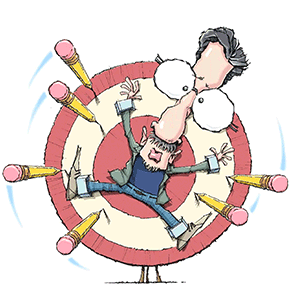The Art of Striper Fishing: Techniques and Tips
Published in Entertainment Articles
Striper fishing, also known as striped bass fishing, is a favorite sport for anglers across the United States. These fish are strong, smart, and fun to catch. They live in both saltwater and freshwater, making them accessible to many fishermen.
Whether you’re a beginner or experienced, learning the right techniques can improve your chances of landing a big one.
This article will guide you through the basics and more advanced tips of striper fishing. We’ll cover where to find stripers, what gear to use, how to fish different waters, and ways to increase your success.
Understanding the Striped Bass
Striped bass are powerful fish known for their long runs and tough fights. They have silver bodies with dark horizontal stripes. Most weigh between 10 and 30 pounds, but some can grow over 50 pounds. These fish travel in schools and often feed near the surface, especially in the early morning or evening.
They are most active during the spring and fall when water temperatures are between 55°F and 68°F. In warmer months, they often go deeper to stay cool. In cooler weather, they move closer to the shore to chase baitfish.
Stripers are found along the Atlantic coast from Maine to North Carolina, in some inland lakes and rivers, and even in the Pacific through stocked reservoirs.
Where to Find Stripers
Finding the right spot is key to successful striper fishing. In saltwater, look for stripers near beaches, rocky points, river mouths, and inshore bays. They like areas with strong currents, drop-offs, and plenty of baitfish.
In freshwater, stripers often gather near dams, spillways, and deep lake channels. During early morning or late afternoon, they move closer to the surface to feed. Using a fish finder can help locate schools of stripers in deeper water.
Bird activity is another good clue. If you see birds diving into the water, chances are they’re feeding on baitfish being pushed to the surface by stripers.
Gear and Tackle
Striper fishing doesn’t require fancy equipment, but using the right gear makes a big difference. A medium-heavy rod with a strong reel is ideal. Spinning reels are popular for casting lures, while baitcasting reels offer better control when trolling or bottom fishing.
Use braided line with a fluorocarbon leader. Braided line is strong and sensitive, and fluorocarbon is nearly invisible in water, making it great for wary stripers.
Hook size depends on the bait or lure you’re using, but most anglers prefer 3/0 to 6/0 hooks. Circle hooks are often recommended for live bait because they reduce the chance of gut-hooking the fish.
Bait and Lures
Stripers are aggressive feeders and will go after a wide variety of baits and lures. Live bait is very effective. Popular choices include bunker (menhaden), eels, shad, and herring. When using live bait, try drifting or slow trolling to mimic natural movement.
Artificial lures can also be very productive. Topwater plugs, soft plastics, swimbaits, jigs, and spoons all work well. Use brighter colors in murky water and natural tones in clear water.
Topwater lures are especially exciting to use, as they often draw explosive strikes. Early morning and dusk are the best times for surface action.
Jigging is another good method, especially in deeper water. Drop your jig to the bottom, then lift and let it fall in a steady rhythm. Stripers often hit the lure on the drop.
Techniques for Success
Different conditions call for different methods. In rivers and bays with strong currents, drifting live bait along current edges is effective. If you’re fishing from shore, cast near structures like jetties, bridges, and rocks. These areas attract baitfish and offer cover for stripers.
Trolling is a great way to cover a lot of water. Use umbrella rigs or deep-diving plugs to reach deeper fish. Vary your speed and direction to trigger more strikes.
When fishing at night, use darker lures that create a strong silhouette. Stripers feed actively after dark, especially during a full moon or when tides are strong.
Pay attention to tides and moon phases. Stripers often feed more during incoming tides and around the new or full moon when bait movement is higher.
Fishing by Season
Striper fishing changes with the seasons. In the spring, stripers migrate to spawn in rivers and estuaries. Look for them in shallow water near river mouths and creeks. They’re hungry after a long winter and ready to strike.
Summer brings warmer water, which pushes stripers into deeper, cooler areas. Early morning and late evening are the best times. Try fishing deeper channels, ledges, and thermoclines.
In the fall, stripers feed heavily to prepare for winter. They often chase schools of baitfish near the surface. This is one of the best times of year to catch big stripers close to shore.
Fishing Locations and Guided Trips
Some of the best striper fishing happens along the East Coast, especially in states like Massachusetts, New Jersey, and Rhode Island. These areas offer great access to striper runs and experienced guides.
If you’re new to the sport or want to improve your skills, booking a guided trip is a smart choice. Services like fishing charters in Rhode Island provide boats, equipment, and local knowledge to give you the best chance at success.
Many charters run from spring through late fall, with peak action usually in May, June, September, and October. Be sure to check regulations and size limits in your area before fishing.
Catch and Release Tips
Stripers are a valuable resource, and many anglers choose to release their catch. If you plan to do so, handle the fish gently. Use wet hands or a rubber net to avoid damaging their protective slime.
Remove the hook carefully using pliers. If the fish is deeply hooked, it’s often better to cut the line close to the hook rather than risk injury. Revive the fish by holding it upright in the water and moving it slowly until it swims away.
Learn All About Striper Fishing
Striper fishing is a fun and rewarding activity for anglers of all levels. With the right gear, techniques, and timing, anyone can enjoy the thrill of catching striped bass. Whether you fish from shore, boat, or with a guide, there’s always something new to learn.
Take care of the fish and follow local rules to help protect the sport for the future. Get out there and enjoy the water; you never know when the next big one will bite.
Visit our blog for more!












Comments